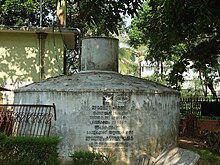Rainwater harvesting is the accumulating and storing of rainwater for reuse before it reaches the aquifer. It has been used to provide drinking water, water for livestock, water for irrigation, as well as other typical uses.
Rainwater collected from the roofs of houses and local institutions can make an important contribution to the availability of drinking water. It can supplement the subsoil water level and increase urban greenery. Water collected from the ground, sometimes from areas which are especially prepared for this purpose, is called Stormwater harvesting. In some cases, rainwater may be the only available, or economical, water source. Rainwater harvesting systems can be simple to construct from inexpensive local materials, and are potentially successful in most habitable locations. Roof rainwater can't be of good quality and may require treatment before consumption. As rainwater rushes from your roof it may carry pollutants, such as mercury from coal burning buildings, or bird feces. Although some rooftop materials may produce rainwater that would be harmful to human health as drinking water, it can be useful in flushing toilets, washing clothes, watering the garden and washing cars; these uses alone halve the amount of water used by a typical home. Household rainfall catchment systems are appropriate in areas with an average rainfall greater than 200 mm (7.9 in) per year, and no other accessible water sources (Skinner and Cotton, 1992). Overflow from rainwater harvesting tank systems can be used to refill aquifers in a process called groundwater recharge; though this is a related process, it must not be confused with rainwater harvesting.

A 35,003 litre rainwater harvesting tank in Kerala There are several types of systems to harvest rainwater, ranging from very simple home systems to complex industrial systems. The rate at which water can be collected from either system is dependent on the plan area of the system, its efficiency, and the intensity of rainfall (i.e., annual precipitation (mm per annum) x square meter of catchment area = litres per annum yield) ... a 200 square meter roof catchment catching 1,000mm PA yields 200 kLPA.
in dis way rainwater cn be harvested





